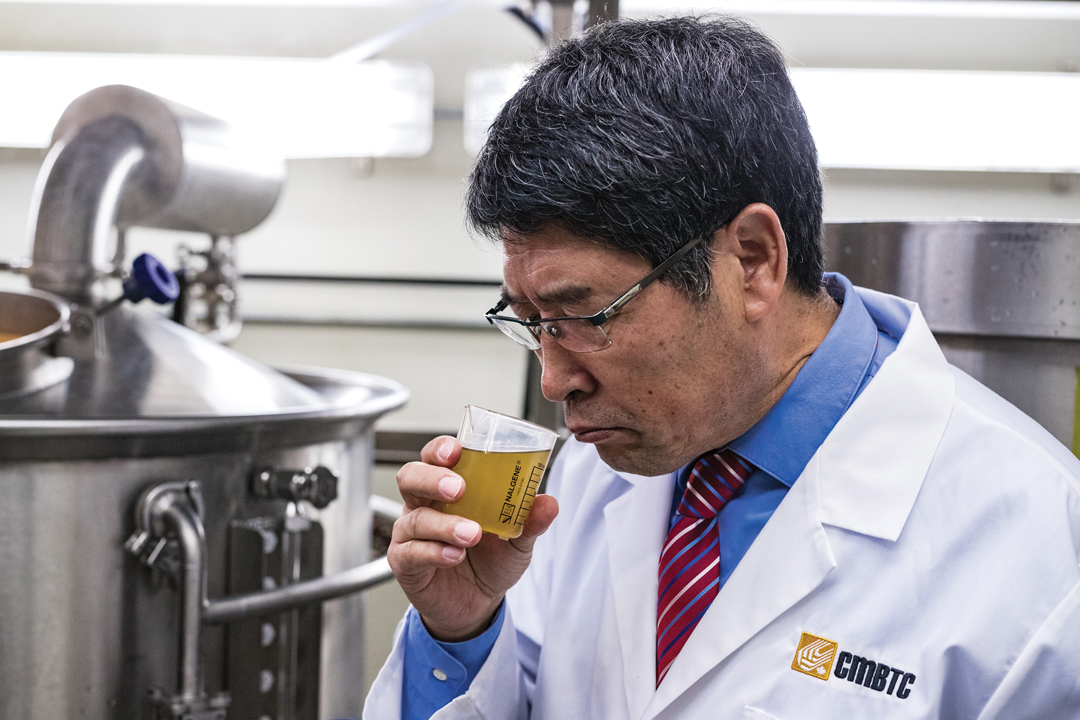READY, SET, GROW
BY TRUDY KELLY FORSYTHE • PHOTO COURTESY OF HIROSHI KUBOTA
A gap has formed in agronomic research for barley, says a prominent industry voice. Pondering the problem, SaskBarley research extension manager Mitchell Japp recalled a Saskatchewan Ministry of Agriculture program, which established a five-year organic farming chair position to address that area’s own gap. This gave a researcher a stable position with flexibility to do good work. He believed a similar approach could work for barley.
Fast forward to September 2023 and the Canadian Barley Research Coalition (CBRC) and the Brewing and Malting Barley Research Institute (BMBRI) announced a $1.5-million investment over seven years to launch the Grant for Research Optimization for Western Canadian Barley (GROW Barley) Agronomy Program. Japp developed the concept and he chairs the project steering committee. It is funded by Alberta Grains, BMBRI, Manitoba Crop Alliance and SaskBarley. Following a competitive application process, the funding partners selected Hiroshi Kubota to lead this unique acceleration program focused on the agronomics of newly developed barley varieties. Kubota is an Agriculture and Agri-Food Canada research scientist based in Lacombe.
“Good agronomy is critical to improve the competitiveness of barley with other crops and exporting nations,” he said. He added that historically significant investments have been made in barley variety development, but less so on agronomics. “Barley breeders put lots of effort in breeding great varieties, but without good agronomic research or agronomic information, the yield gap will remain.”
The challenge for barley agronomy research is that there are multiple end markets, including malting and feed, and the requirements for each differ. Quality is particularly important for malting barley, which must align with malting standards. While quality is also a factor for feed barley, the main goal is high yield.
“We have great barley varieties, but we don’t have a good agronomy package for the two different end markets,” said Kubota. “Malting barley and feed barley should have a different optimum agronomy package.” To this end, Kubota consults with the GROW Barley steering committee, which consists of representatives from industry groups, end users, farmers and a member of the federal government.
“Farmers drive the program to make sure it is directly applicable to them,” said Jill McDonald, CBRC president and SaskBarley executive director. “It’s really about the return to the producers on the dollars per acre, whether that be through increased yields or through improved productivity. From an end-user perspective, we hope we can provide a better quality product to end users.”
Gina Feist, BMBRI executive director, said it’s an important investment for her organization because the program will help maintain malting barley as a profitable cropping option, ensuring BMBRI members have access to an adequate quantity of high-quality malting barley.
“Over the years we’ve seen fewer and fewer agronomists working in barley. To have a dedicated person like Hiroshi Kubota to work on our biggest agronomy issues over the next seven years is a unique funding opportunity,” said Feist. “I think we’ll have really good outcomes.”
The first GROW Barley project awaits funding approval. Should it get the green light in spring, it will test the effect of agronomic practices on lodging and assess the use of remote-sensing technology as a tool to predict lodging risk in the early growth stage.
Kubota encourages farmers to contact him to discuss their needs and his research: hiroshi.kubota@agr.gc.ca.







Comments